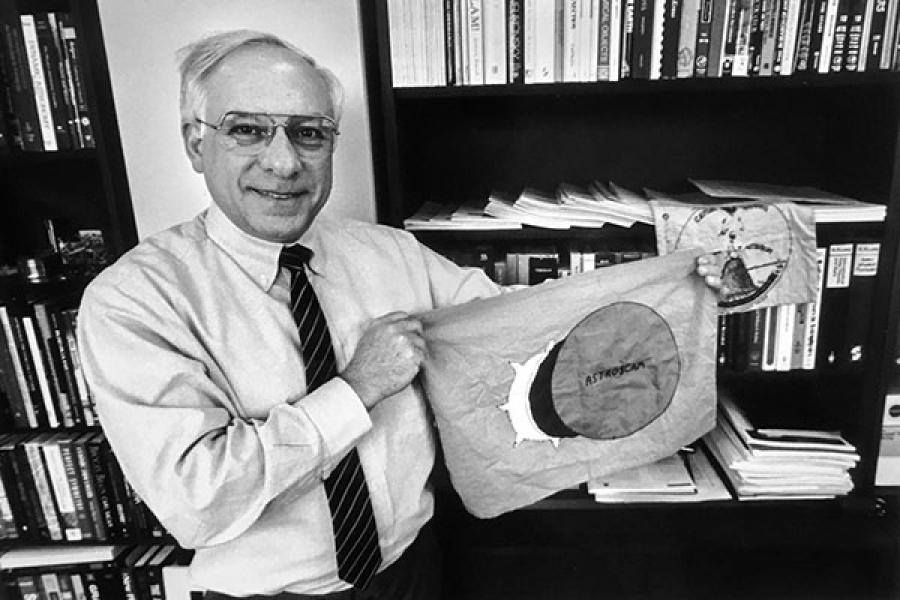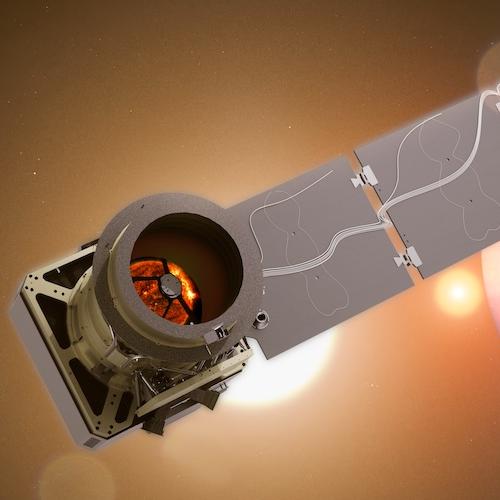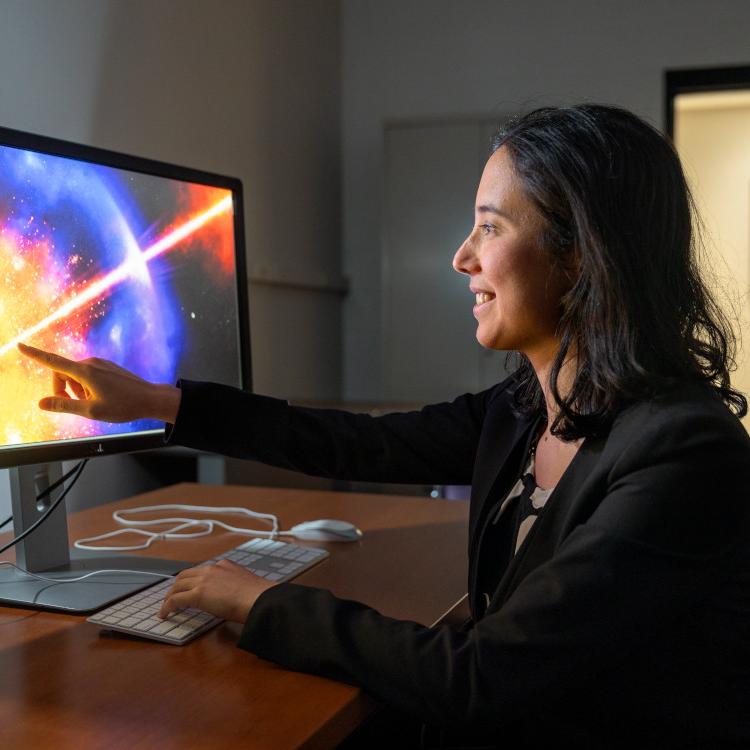Yervant Terzian, the Tisch Distinguished Professor Emeritus in the Department of Astronomy, who studied the physical matter between stars, dedicated his career to education and chaired the department for two decades, died Nov. 25 in Ithaca. Terzian was 80.
“He was always thinking of new and creative ways to make astronomy better at Cornell, and how to make astronomy better as a national and international endeavor,” said department chair Jonathan I. Lunine, the David C. Duncan Professor in the Physical Sciences. “His legacy as a department chair and colleague is profound and lasting.”
In his Cornell career, which stretched over a half-century, Terzian examined the physics of the stellar evolution, planetary nebulae, hydrogen gas between galaxies and the presence of unseen matter in intergalactic space.
In addition to his teaching and research, Terzian served on eight NASA committees, including the Jet Propulsion Laboratory’s Radio Astronomy Evaluation committee, the Hubble Space Telescope Fellowship committee and NASA’s Diversity in Science Education committee.
"In addition to his outstanding teaching abilities, Yervant was a skilled administrator with a talent for turning an unpromising project into an enormously productive endeavor,” said Don Campbell, professor emeritus of astronomy.
From 1996 to 2015, Terzian directed the NASA New York Space Grant Consortium, which he built up to comprise 18 universities, and four industry and science museums. He served as board chair of the Space Grant Alliance from 2007 to 2010. In 2012, the 52-member NASA Space Grant directors’ group elected him as chair, a position he held for two years.
Space grants develop youth interest in space, he believed. “This is what will keep the United States as the leader,” Terzian once said.
In 2018, Terzian received NASA’s Distinguished Public Service Medal, presented by NASA Administrator Jim Bridenstine, MBA ’09. The citation read, in part: “[Yervant Terzian] has used his enthusiasm for space exploration and education to bring inspirational experiences to students and the general public across the country.”
When not examining radio waves or intergalactic matter, Terzian sought opportunities grounded in visibility. For example, in March 1970 he led a group of Cornell students to perform experiments, gather data and view a total solar eclipse at Virginia Beach, Virginia. It would be the only total solar eclipse visible on the East Coast until August 2017. Students conducted radio observations and took infrared images of the eclipse.
“Yervant had a huge impact on everyone who met him, whether a student, professor, scientific colleague, or a friend of astronomy. His positive outlook was infectious,” said James Cordes, George Feldstein Professor of Astronomy.
The author or co-author of more than 235 scientific publications, Terzian was also the editor of seven books, including “Carl Sagan’s Universe,” written with Elizabeth Bilson.
Terzian served as associate editor and scientific editor of the Astrophysical Journal from 1989-99, and he served on the editorial advisory board of The Encyclopedia of Astronomy and Astrophysics, from 1982-92.
In 1992, as the astronomy department’s chair, Terzian started the popular Friends of Astronomy, where any alumnus could join and learn about the stars. Seven years later, the Friends of Astronomy established an endowment for the Yervant Terzian Undergraduate Scholarships; in 2009, Chuck Mund Jr. ’81, a group member and astronomy proponent, established the Yervant Terzian Lectures. A conference room at Cornell’s Space Sciences building was named in his honor in 2017.
“Yervant was always trying to make opportunities for people to explore the universe with him, from the thousands of undergraduates he taught to the ones he mentored in research to the ever-curious Friends of Astronomy,” said Martha Haynes, Goldwin Smith Professor of Astronomy. “He played a pivotal role in enabling young scientists to be successful in research: from the undergraduates who conducted summer research in the programs he fostered to the young faculty he recruited to Cornell. He was a cosmic enabler.”
Terzian, of Greek and Armenian ancestry, was born Feb. 9, 1939, in Alexandria, Egypt. As a youth, he was set on becoming an astronomer: He once walked from his home to the Cairo Observatory to seek the director’s advice. A few years later, he learned English – his fifth language – so that he could read the astronomy books in the American Library of Cairo. The librarian, impressed by his enthusiasm, purchased new books for Terzian when he exhausted the library’s holdings.
He graduated from the Kalousdian Armenian School in Cairo, and he earned a bachelor’s degree from the American University in Cairo in 1960 before emigrating to the United States. He earned a master’s degree (1963) and a Ph.D. (1965) from Indiana University.
Terzian became a research associate and the head of scientific services at Arecibo Observatory in Puerto Rico from 1965-67, before joining the Cornell faculty in 1967 as assistant professor of astronomy. He became an associate professor (1972), a professor (1977) and then department chair (1979).
Terzian was predeceased by his first wife, Araxy Bablanian, and by his sister. He is survived by his wife, Patricia Fernández de Castro, and two children from his first marriage.
A memorial gathering will be held Dec. 6, noon to 2:30 p.m., at 404 Highland Road, Ithaca. A funeral will be held at 3 p.m. at Pleasant Grove Cemetery.
In lieu of flowers, memorial donations can be made to the Armenian National Science & Education Fund (ANSEF). Make checks payable to FAR/ANSEF and mail to: Fund for Armenian Relief (FAR), c/o Mr. Garnik Nanagoulian, 630 Second Ave., New York, NY 10016.
A version of this article appeared in the Cornell Chronicle.







